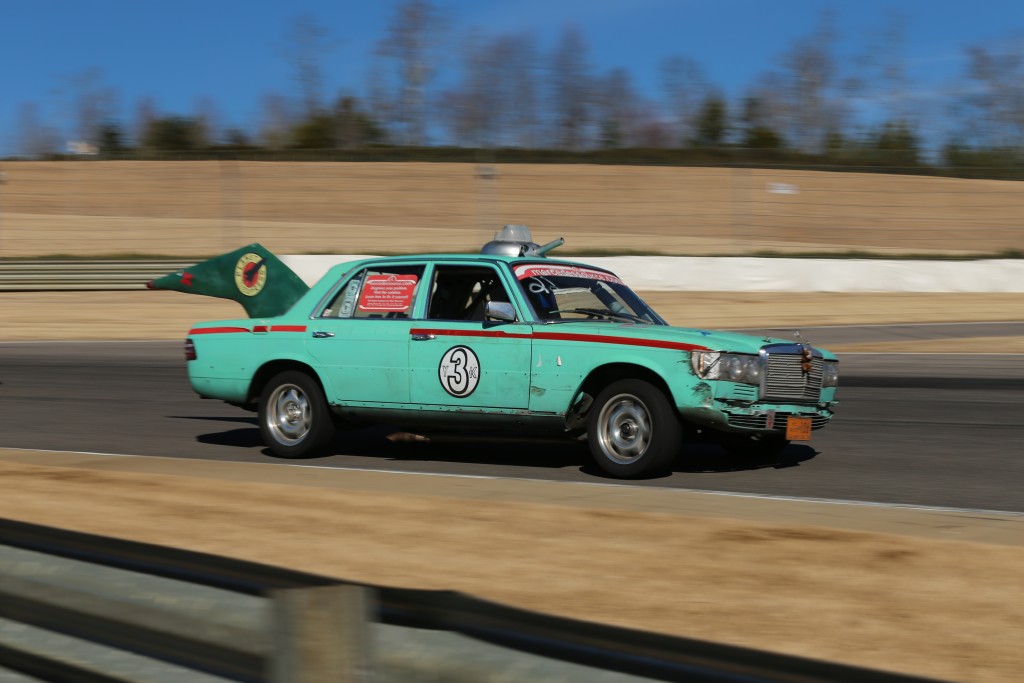I'm reaching the limits of my understanding but I think I still have a little to offer, lol.
mechimike wrote:I'm not disagreeing with what you said, Nathan, and perhaps my statements did not come across clearly. You are correct, load transfer causes body roll. My point was that adding a sway bar won't reduce load transfer, it will only reduce body roll. I think, correct me if I'm wrong.
Mostly correct. Anti-roll bars also affect the RATE of weight transfer, especially between axles...this is why the ratio between front and rear bars can be used to adjust over/understeer characteristics.
mechimike wrote:I better approach would be to reduce the roll couple, so that the amount of weight transfer is les, thus inducing less roll and requiring less bar.
Total Weight Transfer is the sum of three components :
Unsprung Weight Transfer - due to the component of lateral force applied by the weight of the wheels, uprights, brakes etc. For live axle, includes total axle assembly weight. We take the axle height as a close approximation to the centre of gravity, (CG), for the non suspended mass.
And two components of Sprung Weight Transfer:
Geometric Weight Transfer - due to the component of lateral force, applied directly at the Roll Centre (RC). Geometric WT is reacted directly through the suspension linkages, and does not induce body roll.
Elastic Weight Transfer - due to the component of lateral force, applied at the Suspended Mass CG, and does induce body roll. This force is reacted in the springs, anti-roll bars and shocks, and is the only one of the three components of total weight transfer that does induce body roll.
It is clear that low roll centre give little geometric weigh transfer and most of the weight transfer goes through the springs (elastic wt), and is therefore delayed by the time it takes for the vehicle to take a set. Conversely, with high roll centre most of the weight transfer precedes the body roll, leaving a smaller amount of weight transfer to go through the springs.
The location of roll centre heights and the affect on geometric weight transfer vs elastic weight transfer is of importance in the set up of the car. Geometric weight transfer is a major influencer for cars of high front weight percentage and/or for FWD. Also for RWD with live rear axle. Also for current open wheelers with high downforce and little suspension movement.
From "How to make your car handle" - Fred Puhn, P.43:
"In the old days, it was common to use roll-center height as an adjustment to tune the chassis. The theory is, by raising the RCH at one end, you get more weight transfer at that end. There are two problems with this and this method is no longer used.
First, raising the roll center does increase weight transfer due to RCH, but it decreases the weight transfer due to body roll. This introduces complications into the chassis tuning process that are hard to figure out. Whenever you make two changes at once with a chassis adjustment you are in for trouble, and if your changes act in opposite directions, you have made a bad situation even worse!
The second, and by far the worst problem, is the almost impossible task of changing RCH without radically changing the suspension geometry. People used to move the upper A-arm of a double wishbone suspension, thinking it would alter the RCH, but they were changing the camber characteristics and bump steer of the suspension at the same time. These multiple changes make adjusting the roll center a very risky and confusing guessing game with independent suspension. To me, it seems so much easier to adjustable anti-roll bars. These are not only easier to adjust, but the anti-roll bars give you an infinitely fine adjustment.
mechimike wrote:I also agree- tire loading is a weird thing, not at all linear, and as Buzz pointed out, past a certain point grip drrops off very quickly as the tire gets overloaded. I was merely postulating that the tire load ratings might be a good place to start with regard to calculating what amount of load transfer you want on those outside tires. If the roll couple is too small, and not enough weight transfer happens, the car can skid off the track. Obviously in this case he's a LONG way from worrying about this!
Load ratings are not the tire data you need, and tire companies don't really publish slip angle or coeffecient of friction data vs tire load data. If you're sighting in a gun, I'd prefer to take a shot, see how much you're off and adjust the scope, rather than calculating muzzle velocity, distance from target, curvature of earth, aerodynamic effects, and then trying to curve the barrel.
WHICH, brings us back full circle to:
the shaolin wrote:To make sure your roll center is reasonable, I'd verify that all lower control arms are level with the ground or slightly declined toward the wheel. If they car is lowered enough so that they are inclined towards the wheel, the geometry is all jacked up and should be corrected before doing anything else.
and, most elegantly stated,
mackwagon wrote:There are likely several problems.
-Nathan - Team Captain, Priority Fail Racing
1997 Golf GTI VR6 Mid Engine



